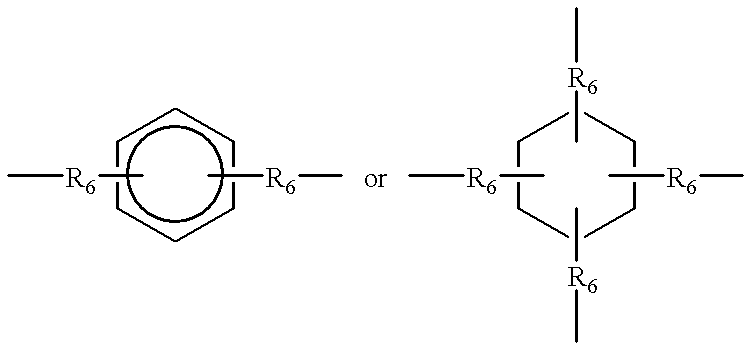Capped ester containing epoxy amine adduct curing agents for curing epoxy resins at ambient or sub-ambient temperatures without external catalysts
a curing agent and epoxy amine technology, applied in the field of curing agent composition for epoxy resins, can solve the problems of unfavorable side effects of primary amines, impaired curing agent reactivity, and increased time required for cure naturally, so as to reduce the reactivity of curing agent, the effect of excellent compatibility
- Summary
- Abstract
- Description
- Claims
- Application Information
AI Technical Summary
Benefits of technology
Problems solved by technology
Method used
Image
Examples
example 1
This example illustrates the synthesis of the substituted aromatic glycidyl ester composition. 500 grams of EPIKOTE 828 in xylene, which is a bisphenol A based epoxy resin available from Shell Chemicals Europe; 327 grams of a 63 wt. % 3-alkyl substituted salicyclic acid mixture in xylene (corresponding to about 20 mole % per epoxy group), in which the alkyl group contains from 14 to 18 carbon atoms and the mixture contains less than 15 mole % of C.sub.14 -C.sub.18 alkyl phenols and less than 5 mole % of dicarboxylic acid species; and 0.15 grams of ethyltripenylphosphoniumiodide were mixed together in a vessel equipped with a condenser. The reaction temperature was increased to 175.degree. C. (heating up to 110.degree. C. in 30 minutes, holding for another 30 minutes at 110.degree. C. and then heating to 175.degree. C. within the next 60 minutes, and holding the temperature at 175.degree. C. for the next 30 minutes, for a total reaction time of 2.5 hours. Water and xylene were stripp...
example 2
In this example, a substituted aromatic glycidyl ester composition was also made using the same ingredients and procedure as in Example 1, except that only the amount of the substituted salicyclic acid having 14 to 18 carbon atom substitution corresponded to 5 mole % per epoxy group instead of 20 mole %. The product was dissolved in xylene to give a solution having 95 wt. % solids. This product was designated as SSA-3. This product was dissolved with more xylene to give a solution with 85 wt % solids. This more diluted product was designated as SSA-4.
example 3
This example demonstrates the synthesis of the curing agent of the invention based on SSA-2.
A 2000 ml. 4-necked round-bottomed flask was equipped with a condenser having a water trap, a nitrogen inlet, an acid inlet, and the TETA inlet. The flask was flushed with nitrogen. 468.54 g of TETA was charged to a flask and warmed to 93.degree. C. over a fifteen minute period. Then, 471.00 g of SSA-2 was added slowly over a period of 1 hour, 25 minutes, and held at about 93.degree. C. for about 1 more hour. Subsequently, the temperature was increased to about 230.degree. C. for the remainder of the reaction, which lasted for another 6 hours, during which a vacuum was pulled to about 25 in.Hg-27 in.Hg to distill off unreacted TETA and xylene. About 91.52 g of xylene and 312.36 g of TETA were collected. After that, the reaction was allowed to cool overnight. The amine value was measured at 421 mg KOH / g.
The next day, the reaction product was heated to 230.degree. C. to confirm that no more TET...
PUM
| Property | Measurement | Unit |
|---|---|---|
| Angle | aaaaa | aaaaa |
| Substance count | aaaaa | aaaaa |
| Temperature | aaaaa | aaaaa |
Abstract
Description
Claims
Application Information
 Login to View More
Login to View More - R&D
- Intellectual Property
- Life Sciences
- Materials
- Tech Scout
- Unparalleled Data Quality
- Higher Quality Content
- 60% Fewer Hallucinations
Browse by: Latest US Patents, China's latest patents, Technical Efficacy Thesaurus, Application Domain, Technology Topic, Popular Technical Reports.
© 2025 PatSnap. All rights reserved.Legal|Privacy policy|Modern Slavery Act Transparency Statement|Sitemap|About US| Contact US: help@patsnap.com



